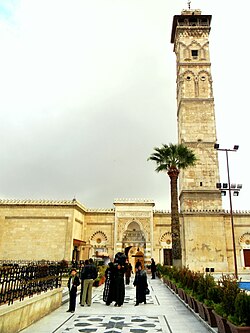Rashidunids

- Al-Shuaibiyah Mosque (al-Atras Mosque), 637 AD
Aleppo was never a capital of any of the grand Arab dynasties, but nevertheless the city's central position in the Levant between Damascus and Baghdad, and its closeness to Anatolia, helped the city to prosper fast. This is a list of mosques in Aleppo from different dynastic periods.







